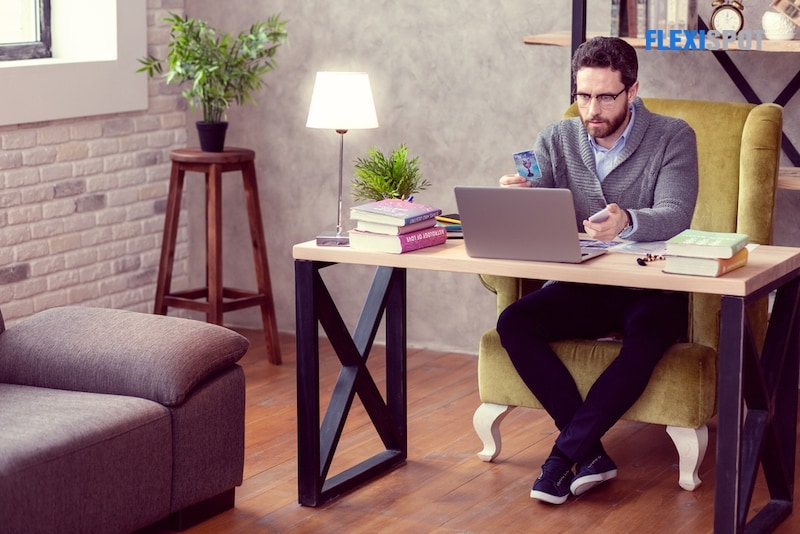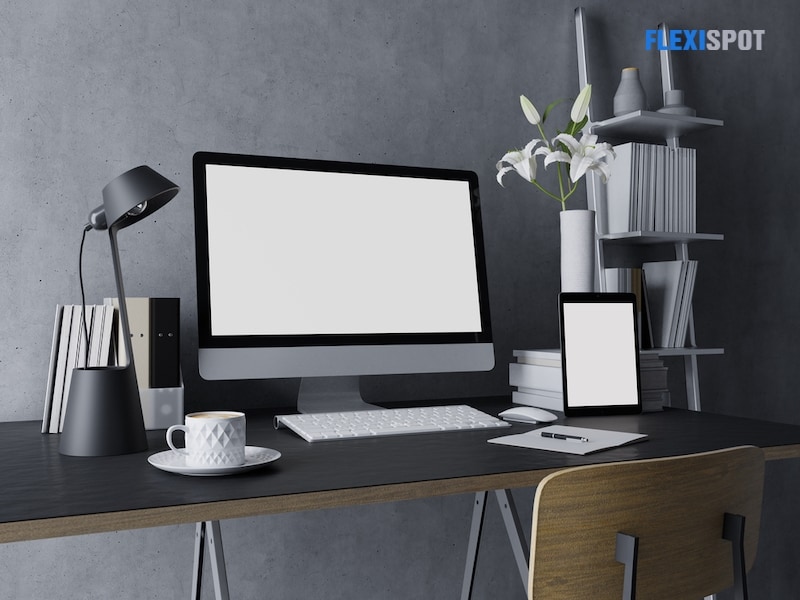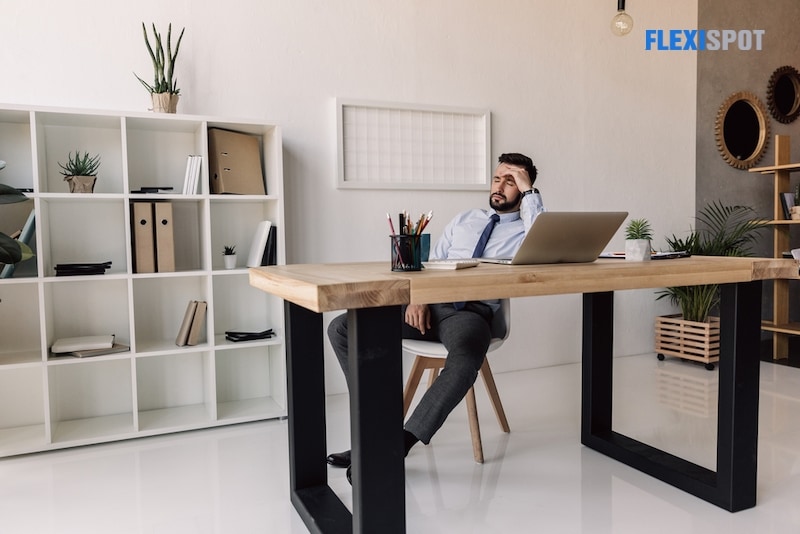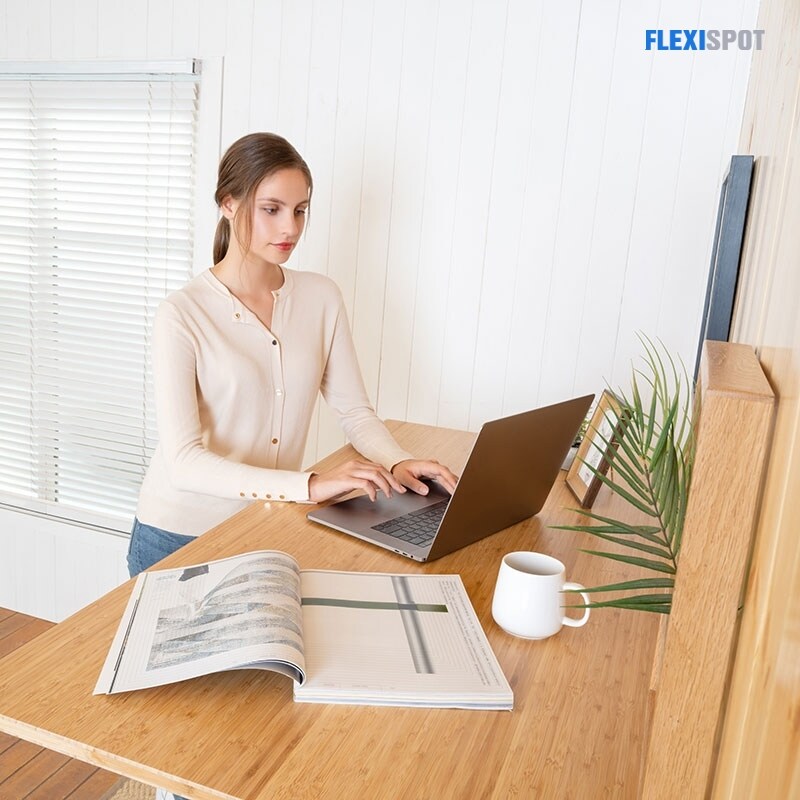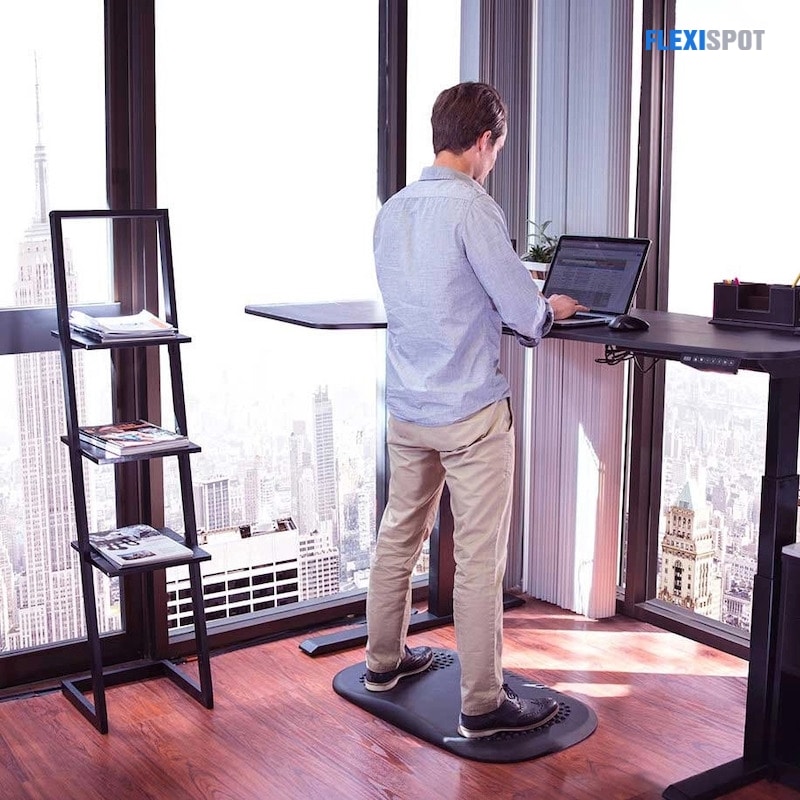For people who have been working for a good chunk of their lives, sitting down for 8 hours a day is work in itself, and if they got a chance to switch up things, then they would. Fortunately for modern employees, technology and innovation have gone a notch higher and have brought so many possibilities for the workstation.
But the question remains, which is better between standing desks and sitting desks?
To ensure we don’t make a biased verdict, we are going to explore what standing desks and sitting desks are, the advantages and disadvantages of each, a quick look at the best examples in the market today with the hope that by the end of this, you will have all that you need to make an informed decision.
Sitting Desks
Sitting desks have been around for much longer than standing desks, and it is only natural that we begin with them. By description, a sitting desk is any workstation that allows people to handle their work while seated. They are usually fixed and cannot be adjusted in any direction, and although they are functional, this limited flexibility makes them very tiring to use in the long run.
Benefits of Sitting Desks
They are comfortable when combined with the right chair. Having an adjustable desk makes using a sitting desk much more convenient as you can change the height of the chair concerning your size and the positioning of the desk. This accords you with some level of freedom that makes it easy for you to work better compared to using a fixed desk and chair where the only movements you can make are your legs or shifting a little on the chair.
A sitting desk is more stable as it is designed to stay in one place. This means that everything from the foundation up is made heavy deliberately so that any time you feel like moving about, the desk still maintains its position, holding everything that’s on top in place. This comes in handy in work that requires intense concentration.
Sitting desks have a bigger holding capacity in terms of surface area and supporting heavy loads. Ditting desks usually occupy a lot of space, and this ample room provided makes it easy to place everything that you need on the surface without straining any part of the desk. You could even place the heaviest PC and a monitor on top, and you will still be able to use the desk without any fear of collapse.
Sitting desks can be shared, which can save the office a lot of money spent on buying each employee theirs. Some offices are even known to make use of a single huge desk that accommodates many people simultaneously. This saves on space and money and makes it easier for people to collaborate at work as they have easy access to each other.
Sitting desks add structure to the office. They are the standout pieces of office furniture, and depending on their design, they can make the office space look professional, and that’s the one image you want to portray to people who walk into your office. Therefore, when choosing sitting desks, ensure that you go for the ones that don’t simply provide working spaces for the employees but add a professional touch.
Limitations of Sitting Desks
The fact that they are fixed means that flexibility is limited, and there’s very little you can do to enhance their comfort. Getting an adjustable chair is one solution, but those don’t come cheap. Once a sitting desk has been designed, that’s the end of it. It can only be moved around and nothing more.
Sitting desks are not healthy for long use. People tend to lean over too much to reach their computers and books, and this creates a gradual strain on their backs, and with time, this develops into serious health issues. You will be forced to take too many breaks to stretch, and this can interfere with your productivity.
They are uncomfortable, and this is down to their fixed design. With the ability to make modifications taken away, you are left with no choice but to use them as they are, and this includes resting your elbows on hard surfaces, lacking the space to straighten your legs, among many others.
Standing Desks
Standing desks are an innovation that has gained momentum and popularity in the last decade owing to the great flexibility they bring to the working space. They are the best investment you can ever make for your office space as they are versatile and can serve the functions of two desks for one. To better understand them, let’s look at the benefits and limitations.
Benefits of Standing Desks
Standing desks are a healthier option for working as they boost metabolism by providing extra working positions. You can switch from sitting to standing any time you feel like it, and this is a form of workout that helps you burn more calories, and this will reflect on your overall health in the long run.
Standing desks increase productivity by offering two options to the user. You can choose to use them as sitting desks, and once your body becomes too tired for that position, you can change to standing. These transitions take less than 10 seconds, and you don’t even have to stop working in between. In a nutshell, you get two desks in one and continue handling your work without long interruptions.
Standing desks are lightweight and portable; you don’t even need any help moving them around. And when you also consider how small they are, you can use them in limited spaces without any issues. The ability to move them around as you wish makes it easy for you to do your work in any part of the room or the office without interfering with what other people are doing.
You get better posture by using a standing desk as you can switch from sitting to standing any you want. Leaning over the desk while sitting is not good for the back, but working while standing allows you to maintain a very upright posture that relieves the weight of your spine, and this will cut down the back pains you have been feeling by a huge amount.
They are stylishly designed and have the capabilities to transform even the smallest of spaces to look good and be functional. Standing desks are made using high-quality materials that are durable and aesthetically pleasing. They can change any drab-looking office space into a place of fun, and that will be good for the morale of all the people that use that space.
A majority of standing desks are automated, and they come with electrical buttons that allow users to switch between sitting and standing with ease in a matter of seconds. This eliminates the risks of injuring your back when operating them, and they save you time in the process.
Limitations of Standing Desks
They are expensive since they are designed with a lot of movable parts, from the foundation of the desk that’s made of solid metal for extra support, internal wiring for the electrical functions, and broad desktop surfaces for supporting huge loads. Getting all these features to work in tandem takes skill, and that costs a lot more than sitting desks.
They are not ideal for laptop users since they requires the elbows to get support, which can be hard if you are using a standing desk. Some standing desks have to be equipped with two-tiered platforms, once for the laptop and keyboard and another one for other items like a PC, among other necessary tools for your work.
When it comes to using standing desks, you have to wear flat shoes; otherwise, you will be subjecting your feet to sores and other painful complications. Flat shoes may be good in the long run, but they need to dress professionally and this can work against an office setting.
The Verdict
So what do you go for when faced with these two choices? Based on flexibility and what you can do, the standing desk is a clear winner here, and despite the high price tag, it is a better investment for your long-term needs. At the same time, this doesn’t mean sitting desks are now a thing of the past, they still have a lot to offer, and if you combine them with the right chairs, they can be just as good as standing desks. At the end of the day, the decisions come down to three main factors; your personal preference, your workstation needs, and the size of your budget.
For more information on standing desks and the best types that are currently making waves in the market, make a point to check our website out, and if you have any questions and concerns, our team of experts will be there to handle all that for you.
